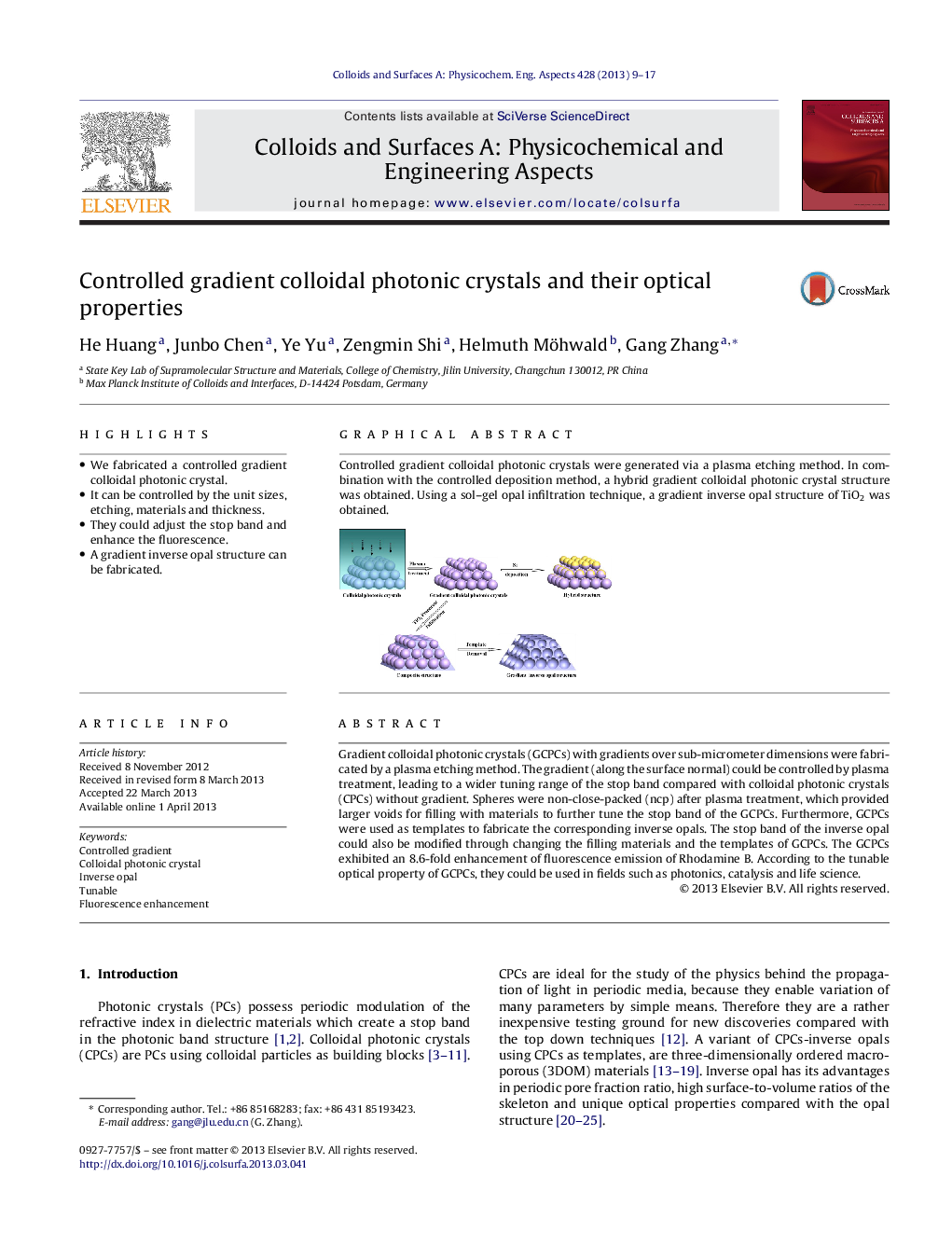| Article ID | Journal | Published Year | Pages | File Type |
|---|---|---|---|---|
| 593645 | Colloids and Surfaces A: Physicochemical and Engineering Aspects | 2013 | 9 Pages |
•We fabricated a controlled gradient colloidal photonic crystal.•It can be controlled by the unit sizes, etching, materials and thickness.•They could adjust the stop band and enhance the fluorescence.•A gradient inverse opal structure can be fabricated.
Gradient colloidal photonic crystals (GCPCs) with gradients over sub-micrometer dimensions were fabricated by a plasma etching method. The gradient (along the surface normal) could be controlled by plasma treatment, leading to a wider tuning range of the stop band compared with colloidal photonic crystals (CPCs) without gradient. Spheres were non-close-packed (ncp) after plasma treatment, which provided larger voids for filling with materials to further tune the stop band of the GCPCs. Furthermore, GCPCs were used as templates to fabricate the corresponding inverse opals. The stop band of the inverse opal could also be modified through changing the filling materials and the templates of GCPCs. The GCPCs exhibited an 8.6-fold enhancement of fluorescence emission of Rhodamine B. According to the tunable optical property of GCPCs, they could be used in fields such as photonics, catalysis and life science.
Graphical abstractControlled gradient colloidal photonic crystals were generated via a plasma etching method. In combination with the controlled deposition method, a hybrid gradient colloidal photonic crystal structure was obtained. Using a sol–gel opal infiltration technique, a gradient inverse opal structure of TiO2 was obtained.Figure optionsDownload full-size imageDownload as PowerPoint slide
